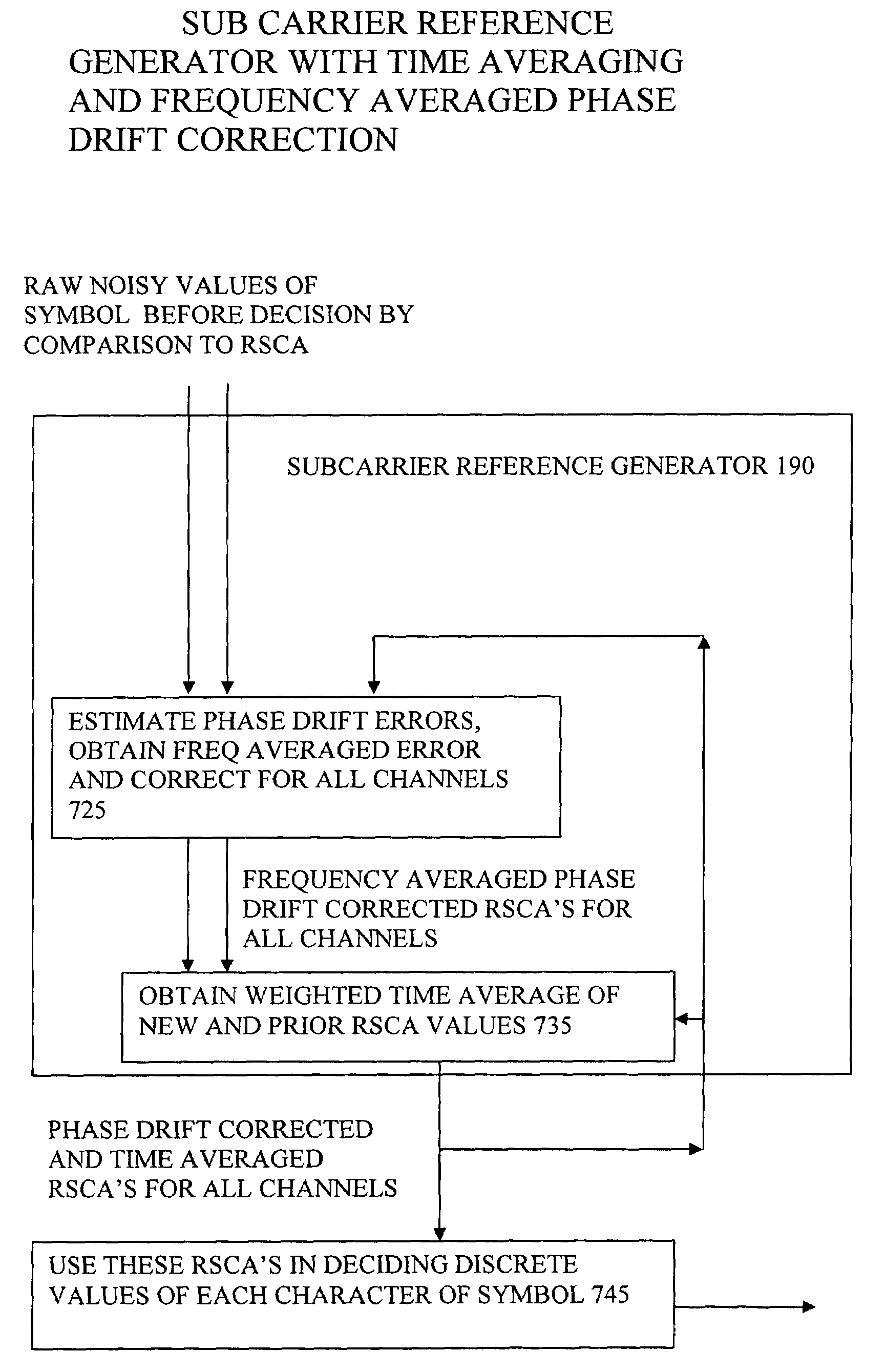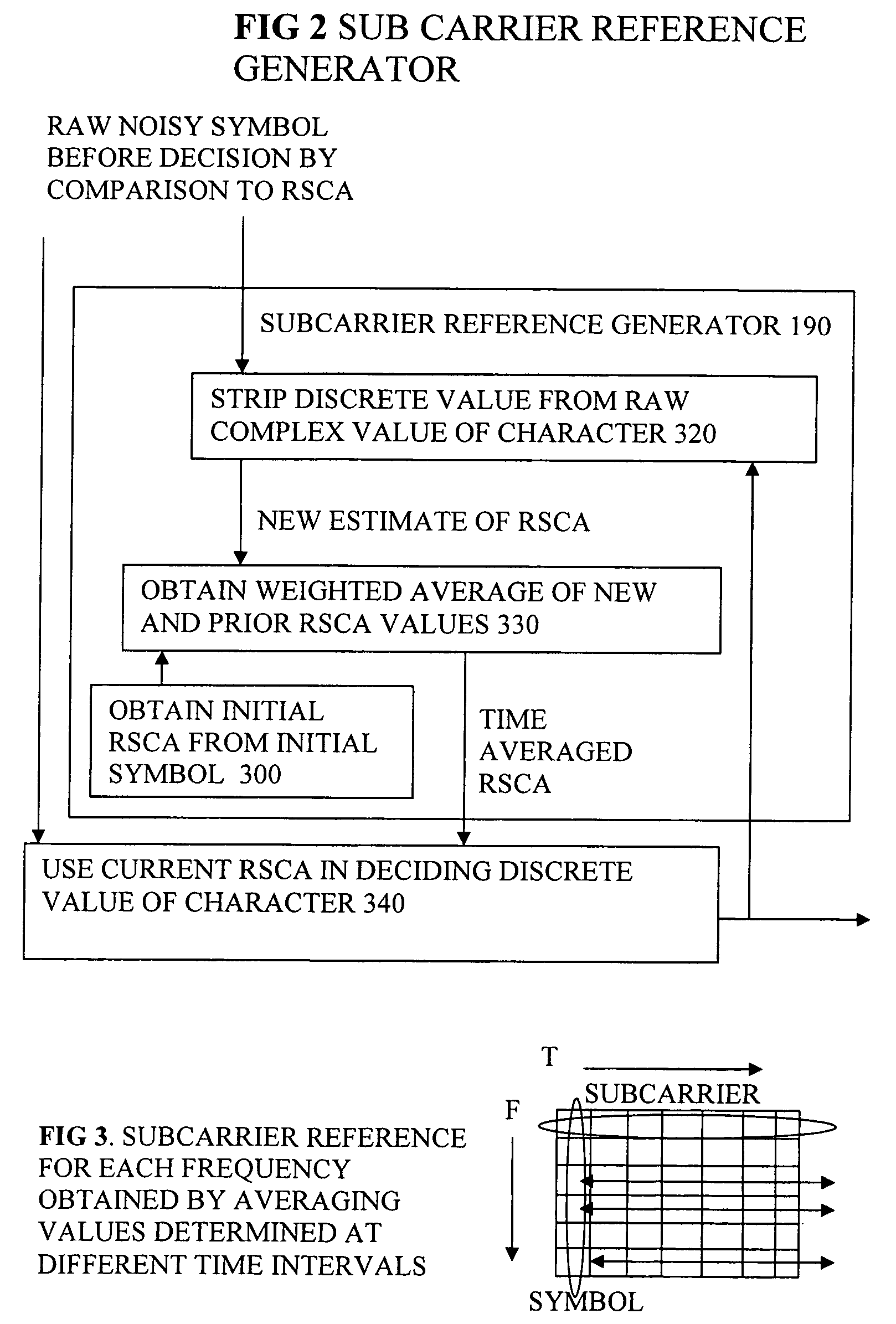Reference phase and amplitude estimation for coherent optical receiver
a technology of reference phase and amplitude estimation, which is applied in the direction of radio-over-fibre, electrical equipment, fibre transmission, etc., can solve the problems that phase drift errors can be a particular limitation of optical systems, and achieve the effect of accurate drift determination, greater susceptibility to phase drift, and accurate compensation
- Summary
- Abstract
- Description
- Claims
- Application Information
AI Technical Summary
Benefits of technology
Problems solved by technology
Method used
Image
Examples
Embodiment Construction
[0068]Some embodiments described address how to enhance the noise robustness of OFDM without the overhead of transmitting pilot tones. The technique described can be called decision driven averaged carrier recovery. Other embodiments introduce a method to correct for phase drifts in the optical source also without need of pilot tone transmission. Embodiments of the demodulation techniques described can approach the noise resilience of the coherent limit but without the additional overhead of the pilot tones. The data can be differentially encoded in the transmitter, so that transmission of any reference signals or pilot tones is not always necessary. The combination of both techniques can be used to minimise the impact of the amplification noise and the reduced laser coherence that would otherwise affect optical OFDM.
[0069]Minimising the impact of additive white Gaussian noise involves generating a subcarrier reference also termed a Reference Subcarrier Complex-Amplitude (RSCA) for ...
PUM
 Login to View More
Login to View More Abstract
Description
Claims
Application Information
 Login to View More
Login to View More - R&D
- Intellectual Property
- Life Sciences
- Materials
- Tech Scout
- Unparalleled Data Quality
- Higher Quality Content
- 60% Fewer Hallucinations
Browse by: Latest US Patents, China's latest patents, Technical Efficacy Thesaurus, Application Domain, Technology Topic, Popular Technical Reports.
© 2025 PatSnap. All rights reserved.Legal|Privacy policy|Modern Slavery Act Transparency Statement|Sitemap|About US| Contact US: help@patsnap.com



